Pat, I have alot of respect for your wisdom and input. I haven't heard a speaker to date that has a tweeter on the back of it which I would listen to more than once. Yes, I'm biased as you know, but from all of my experience and research, there is no benefit which I could think of based on simple acoustical science. I'm sure the designer had good reasoning and theory to build them that way, but I haven't been convinced of any benefits to be had. As speaker designers and builders, we go through all the hassle of avoiding throwing the sound in directions other than at the listener(s) and if it goes in other directions, we don't want it bouncing off other surfaces and smearing the direct sound. I enjoy learning about other people's design work and even though I may not agree with the design, there are still things to be learned. I just wish someone could present me some proof that a rear firing tweeter does anything good to improve the performance of a speaker.
There's a possible caveat to this. I have 90 degree waveguides, but I have semi omni tweeters on them facing backwards. They are time delayed >10 seconds so it's for late reflection ambience. Sound great though!
The time delay seems to make all the difference and is what separates this technique from a Bose-style implementation.
I know it's been said a million times, by a million people - But I once had a pair of 901 series VI in walnut veneer. They were possibly the worst sounding 'hi-fi' speakers I ever owned. And I tried everything with them in terms of placement. They simply broke just about every rule of proper speaker design. And yes I had the EQ.
They sure did look good though.
They sure did look good though.
The only reasons Bose is still in business is due to marketing BS and people successfully misusing the 901 for misc pro audio purposes.
People that love Bose are clueless uneducated trendy hippies who see the brand as a fashion statement. I'm not aware of any audiophile that owns Bose speakers. There isn't much sane reasoning behind throwing a bunch of cheap low quality drivers into a small cabinet and applying a crap load of DSP in an attempt to fixing the horrid response curve.
I used to repair AV gear back when those lifestyle home theater systems were being sold. They were very expensive, sounded awful and would constantly break, yet people bought them like bottled water in the desert. It proves that great marketing BS can sell ice to an Eskimo. Sad.......
People that love Bose are clueless uneducated trendy hippies who see the brand as a fashion statement. I'm not aware of any audiophile that owns Bose speakers. There isn't much sane reasoning behind throwing a bunch of cheap low quality drivers into a small cabinet and applying a crap load of DSP in an attempt to fixing the horrid response curve.
I used to repair AV gear back when those lifestyle home theater systems were being sold. They were very expensive, sounded awful and would constantly break, yet people bought them like bottled water in the desert. It proves that great marketing BS can sell ice to an Eskimo. Sad.......
re: unlistenable speakers because of rear-firing tweeters
It's been studied and proven that we all have different fingerprints and irises... I think I've read research about outer ear shapes, too. I'd imagine that sooner or later they'll get around to studying and concluding the same about our inner ear follicles and hear acuities.
35-45 years ago, when I had 15-25 year old ears, I spent much free time listening to many different speaker systems at stores all over Ohio (Cle, Col, Cin, Tol, and Akr).
My favorite "unobtainable-but-actually-listened-to" back then? The original Infinity Quantum Line Source, Wilson Watt/Puppy, and Polk SDA SRS. (The Wilson's soundstage/imaging was spooky, but what the other two did to direct-to-disk big band jazz albums played at front row levels trumped the Wilson's limited output and was, therefore, next-level). (The huge McIntosh XRT-22's and Klipschhorn's and the JBL Paragon did not "pull me in", so I know it wasn't just the power that was attracting me).
My favorites back then that I might eventually be able to buy? Along with stores full of everything else available, I listened to the following for hours, each, and yearned to own them: Kef 104/2, Snell type E, JSE Infinite Slope Model 1, and Dahlquist DQM-9.
Those Snell's had a .75" rear-firing tweeter. So, I did not find that a "rear-firing tweeter" equated to "unlistenable". That probably adds nothing to further this thread, but, FWIW, there's my $.02.
It's been studied and proven that we all have different fingerprints and irises... I think I've read research about outer ear shapes, too. I'd imagine that sooner or later they'll get around to studying and concluding the same about our inner ear follicles and hear acuities.
35-45 years ago, when I had 15-25 year old ears, I spent much free time listening to many different speaker systems at stores all over Ohio (Cle, Col, Cin, Tol, and Akr).
My favorite "unobtainable-but-actually-listened-to" back then? The original Infinity Quantum Line Source, Wilson Watt/Puppy, and Polk SDA SRS. (The Wilson's soundstage/imaging was spooky, but what the other two did to direct-to-disk big band jazz albums played at front row levels trumped the Wilson's limited output and was, therefore, next-level). (The huge McIntosh XRT-22's and Klipschhorn's and the JBL Paragon did not "pull me in", so I know it wasn't just the power that was attracting me).
My favorites back then that I might eventually be able to buy? Along with stores full of everything else available, I listened to the following for hours, each, and yearned to own them: Kef 104/2, Snell type E, JSE Infinite Slope Model 1, and Dahlquist DQM-9.
Those Snell's had a .75" rear-firing tweeter. So, I did not find that a "rear-firing tweeter" equated to "unlistenable". That probably adds nothing to further this thread, but, FWIW, there's my $.02.
Another look at rear-firing
Hang on, you are describing anechoic chamber sound as the ultimate goal. This has been proven to be wrong. It’s actually desirable and necessary to have sound “in directions other than at the listener”.
I think the issue is that, in almost all cases of home listening room environments, the room treatment is, shall I say, unsophisticated, and therefore we will be hearing a reasonable amount of reflected sound that has not been very well handled.
When designers find through trial and error that they are getting a subjectively better sound quality with the addition of a rear firing driver, it is most likely because the room sound needs a little bit of balance added, and especially high-frequency to create a bit more realism in spaciousness. Without it, the room sound will be dominated by low frequencies, which will not add to spaciousness. I know Linkwitz found this with his Orion, and perhaps Voecks too.
The biggest reason almost all speakers don’t do it, IMO, would be the necessity to design for real life buyers often needing to put their speakers against the back wall, or nearly so.
Cheers
Pat, I have alot of respect for your wisdom and input. I haven't heard a speaker to date that has a tweeter on the back of it which I would listen to more than once. Yes, I'm biased as you know, but from all of my experience and research, there is no benefit which I could think of based on simple acoustical science. I'm sure the designer had good reasoning and theory to build them that way, but I haven't been convinced of any benefits to be had. As speaker designers and builders, we go through all the hassle of avoiding throwing the sound in directions other than at the listener(s) and if it goes in other directions, we don't want it bouncing off other surfaces and smearing the direct sound. ...I just wish someone could present me some proof that a rear firing tweeter does anything good to improve the performance of a speaker.
Hang on, you are describing anechoic chamber sound as the ultimate goal. This has been proven to be wrong. It’s actually desirable and necessary to have sound “in directions other than at the listener”.
I think the issue is that, in almost all cases of home listening room environments, the room treatment is, shall I say, unsophisticated, and therefore we will be hearing a reasonable amount of reflected sound that has not been very well handled.
When designers find through trial and error that they are getting a subjectively better sound quality with the addition of a rear firing driver, it is most likely because the room sound needs a little bit of balance added, and especially high-frequency to create a bit more realism in spaciousness. Without it, the room sound will be dominated by low frequencies, which will not add to spaciousness. I know Linkwitz found this with his Orion, and perhaps Voecks too.
The biggest reason almost all speakers don’t do it, IMO, would be the necessity to design for real life buyers often needing to put their speakers against the back wall, or nearly so.
Cheers
Last edited:
"Kevin Voecks has been on a thirty year streak" Bose streak is a long one!
The masses recognize Television/video/picture clarity, but for some reason not Audio clarity. Why not?
The masses recognize Television/video/picture clarity, but for some reason not Audio clarity. Why not?
Hang on, you are describing anechoic chamber sound as the ultimate goal. This has been proven to be wrong. It’s actually desirable and necessary to have sound “in directions other than at the listener”.
This is a true statement.
Controlled directivity greatly enhances imaging at the expense of the “spaciousness” one can experience with a direct radiator with uncontrolled directivity. Acoustically energizing the listening space with a delayed signal allows the reintroduction of spaciousness without the imaging degradation associated with very early reflections.
--
The masses recognize Television/video/picture clarity, but for some reason not Audio clarity. Why not?
Humans prioritize visual perception over aural, that's why. A good example is to put a single speaker offset from tv and play tv sound with it. Presto - we localize speech to tv screen, even music.
Auditory and visual scene analysis: an overview
https://royalsocietypublishing.org/doi/10.1098/rstb.2008.0230
"Kevin Voecks has been on a thirty year streak" Bose streak is a long one!
The masses recognize Television/video/picture clarity, but for some reason not Audio clarity. Why not?
This is begging the question. We feel like we better recognize what we see with our vision when it is corroborated by what we hear. When the issue is sound alone, we are at a comparative loss for visual cues. The territory becomes a bit more fraught.
Our auditory system is quite good, it's our speakers that aren't. Many create a confusing and unnatural soundstage. When done right you don't have to think about it. Oh, that sound is coming from there, and that sound is coming from there...
There's some great data and sims, relevant to this thread, here:
VituixCAD
In a nutshell, he's showing how manipulating the baffle width, driver spacing, crossover slopes and crossover points can yield beamwidth control with very small waveguides, or no waveguides at all.
Really great stuff.
I've been following the measurements over at Audiosciencereview and it's interesting to see how speaker designers are able to get directivity control down to as low as 400-500Hz without resorting to a waveguide that's over a foot in diameter.
VituixCAD
In a nutshell, he's showing how manipulating the baffle width, driver spacing, crossover slopes and crossover points can yield beamwidth control with very small waveguides, or no waveguides at all.
Really great stuff.
I've been following the measurements over at Audiosciencereview and it's interesting to see how speaker designers are able to get directivity control down to as low as 400-500Hz without resorting to a waveguide that's over a foot in diameter.
Direct radiators are usually smaller than horn speakers, which can get very large for bass reproduction.
I've been following the measurements over at Audiosciencereview and it's interesting to see how speaker designers are able to get directivity control down to as low as 400-500Hz without resorting to a waveguide that's over a foot in diameter.
Could you please link to those threads?
This is the sort of thing Patrick is describing you can see in the Revel M106 that the beamwidth is reasonably consistent at 100 degrees down to about 800 Hz and still has some directivity at 500Hz before it turns omnidirectional quickly. Most of the bookshelf speakers with a small waveguide exhibit the same. A tweeter without a waveguide can have some directivity if the baffle and cabinet are designed to support it.Could you please link to those threads?
Revel M106 Bookshelf Speaker Review | Audio Science Review (ASR) Forum
Attachments
Pretty much.
I would add, that a big part of the phenomenon is the depth of the speaker, I think.
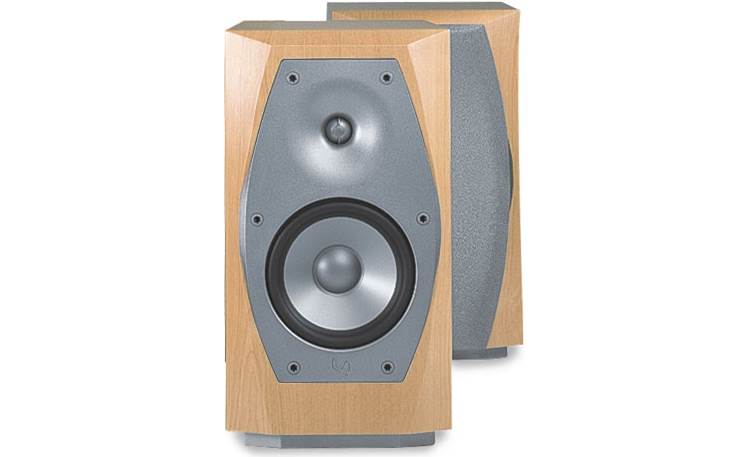

For instance, here's two Harman speakers, made by different designers. Height, width, depth and crossover point are nearly identical.
Harman doesn't seem to do things by accident.
With a width of 22cm, the woofer and the tweeter are going to be radiating into half space above 1600Hz.
400Hz is nearly a meter long; at that wavelength, the cabinet of the loudspeaker is virtually "invisible", the speaker will be radiating in 360 degrees.
800Hz is 43cm long. That's short enough, where a fraction of the wavefront is radiating into half space, while another fraction is radiating in 360 degrees. And I think that's the thing that yields the waveguide-like effect: that the edges of an 800Hz wavefront are radiating in all directions, and since the edge of the wavefront is doing that, but not the center, the edges get shaded.
The fact that the cabinets on so many of their speakers share similar dimensions leads me to think that there's probably some combination of xover point and cabinet dimensions that is ideal for this.
Another consideration, also, is power handling. For instance, if you reduced the width of the cabinet down to 6", used a smaller woofer but kept the same xover point, the tweeter would be working extra hard from 1500-2000Hz because it would be radiating into 360 degrees.
If my hunch is correct, then if you lower the xover point on the tweeter you would want to make the cabinet wider.
I don't think Revel has ever made an 8" or 10" two way. But it would be interesting to take the M106 cabinet, then scale it to accomodate an 8" woofer, and then a 10" woofer. Move the xover point down as the cabinet gets bigger.
Then listen to all three, and see which one sounds the best.
It would be an interesting test of what listeners prefer. For instance, I like the dynamics of my Yamaha with a 12" midrange, it makes my Infinity IL10s sound anemic. For me, it's hard to say which one images better; they're very close. But I like the Yamahas better, because I like dynamic speakers.
I would add, that a big part of the phenomenon is the depth of the speaker, I think.


For instance, here's two Harman speakers, made by different designers. Height, width, depth and crossover point are nearly identical.
Harman doesn't seem to do things by accident.
With a width of 22cm, the woofer and the tweeter are going to be radiating into half space above 1600Hz.
400Hz is nearly a meter long; at that wavelength, the cabinet of the loudspeaker is virtually "invisible", the speaker will be radiating in 360 degrees.
800Hz is 43cm long. That's short enough, where a fraction of the wavefront is radiating into half space, while another fraction is radiating in 360 degrees. And I think that's the thing that yields the waveguide-like effect: that the edges of an 800Hz wavefront are radiating in all directions, and since the edge of the wavefront is doing that, but not the center, the edges get shaded.
The fact that the cabinets on so many of their speakers share similar dimensions leads me to think that there's probably some combination of xover point and cabinet dimensions that is ideal for this.
Another consideration, also, is power handling. For instance, if you reduced the width of the cabinet down to 6", used a smaller woofer but kept the same xover point, the tweeter would be working extra hard from 1500-2000Hz because it would be radiating into 360 degrees.
If my hunch is correct, then if you lower the xover point on the tweeter you would want to make the cabinet wider.
I don't think Revel has ever made an 8" or 10" two way. But it would be interesting to take the M106 cabinet, then scale it to accomodate an 8" woofer, and then a 10" woofer. Move the xover point down as the cabinet gets bigger.
Then listen to all three, and see which one sounds the best.
It would be an interesting test of what listeners prefer. For instance, I like the dynamics of my Yamaha with a 12" midrange, it makes my Infinity IL10s sound anemic. For me, it's hard to say which one images better; they're very close. But I like the Yamahas better, because I like dynamic speakers.
Last edited:
Mabat, as usual, is absolutely KILLING IT with his ATH software.
A few years back, I started this thread, which was basically dedicated to the idea that we can control the directivity of a loudspeaker with both waveguides AND the shape of the enclosure.
My thought process was that sound diffracts off of the baffle of a loudspeaker enclosure, and that this diffraction can allow you to extend directivity control an octave or even TWO octaves below the dimensions of a waveguide.
In other words: ten or twenty years ago, when we were designing horns and waveguides, we generally focused on the dimensions of a waveguide. For instance, if you wanted to control directivity down to 1350Hz, you would use a waveguide that's ten inches wide. (1350Hz is ten inches wide.)
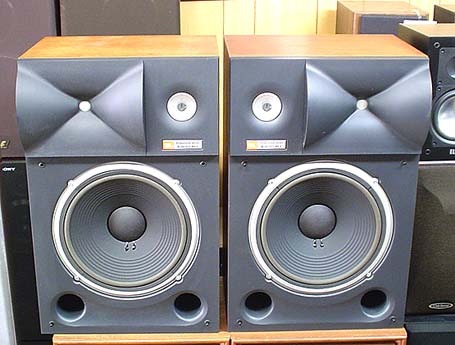
This line of thinking is why speakers from the 80s looked like this.
As software and computers and our understanding of loudspeakers improved, we started to see manufacturers getting directivity control down to 500-1000Hz with waveguides that were very small and shadow. The thing that inspired this thread was my 'hunch' that the enclosure shape was playing a large role.
The new release of Mabat's software has confirmed this 100%, and it's also incredibly cool because you can now manipulate enclosure shape to get the directivity and response shape you're after. I can't tell you guys how amazed I am by this.
Here's a rough sim of the KEF LS50 that I did using the new version of his software. Note that this sim is ONLY for the tweeter, nothing else. So you can safely ignore everything above 1khz or so. But note how the waveguide is only 6" in diameter (2250Hz) but directivity control goes down to about 700Hz, more than an octave lower than the waveguide can control.
And note how the response shape is quite consistent with the actual speaker.

Rough estimate of the KEF LS50 made using the new version of ATH

Predicted horizontal directivity

Measured horizontal directivity, courtesy of Amir from ASR

Predicted horizontal directivity (normalized)

Measured horizontal directivity (normalized)
A few years back, I started this thread, which was basically dedicated to the idea that we can control the directivity of a loudspeaker with both waveguides AND the shape of the enclosure.
My thought process was that sound diffracts off of the baffle of a loudspeaker enclosure, and that this diffraction can allow you to extend directivity control an octave or even TWO octaves below the dimensions of a waveguide.
In other words: ten or twenty years ago, when we were designing horns and waveguides, we generally focused on the dimensions of a waveguide. For instance, if you wanted to control directivity down to 1350Hz, you would use a waveguide that's ten inches wide. (1350Hz is ten inches wide.)
This line of thinking is why speakers from the 80s looked like this.
As software and computers and our understanding of loudspeakers improved, we started to see manufacturers getting directivity control down to 500-1000Hz with waveguides that were very small and shadow. The thing that inspired this thread was my 'hunch' that the enclosure shape was playing a large role.
The new release of Mabat's software has confirmed this 100%, and it's also incredibly cool because you can now manipulate enclosure shape to get the directivity and response shape you're after. I can't tell you guys how amazed I am by this.
Here's a rough sim of the KEF LS50 that I did using the new version of his software. Note that this sim is ONLY for the tweeter, nothing else. So you can safely ignore everything above 1khz or so. But note how the waveguide is only 6" in diameter (2250Hz) but directivity control goes down to about 700Hz, more than an octave lower than the waveguide can control.
And note how the response shape is quite consistent with the actual speaker.

Rough estimate of the KEF LS50 made using the new version of ATH

Predicted horizontal directivity

Measured horizontal directivity, courtesy of Amir from ASR

Predicted horizontal directivity (normalized)

Measured horizontal directivity (normalized)
Attachments
-
![2022-04-08 05_50_10-VacsViewer - (new) - [Converted from PolarMap_SPL_H].png](/community/data/attachments/950/950493-7a8d323b72eaa0dcadae2429d8356781.jpg?hash=eo0yO3LqoN) 2022-04-08 05_50_10-VacsViewer - (new) - [Converted from PolarMap_SPL_H].png80.3 KB · Views: 135
2022-04-08 05_50_10-VacsViewer - (new) - [Converted from PolarMap_SPL_H].png80.3 KB · Views: 135 -
![2022-04-08 05_49_27-VacsViewer - (new) - [Converted from PolarMap_SPL_H_norm].png](/community/data/attachments/950/950494-f41c2731bb894e0b3b59558bd780715f.jpg?hash=9BwnMbuJTg) 2022-04-08 05_49_27-VacsViewer - (new) - [Converted from PolarMap_SPL_H_norm].png87.3 KB · Views: 147
2022-04-08 05_49_27-VacsViewer - (new) - [Converted from PolarMap_SPL_H_norm].png87.3 KB · Views: 147 -
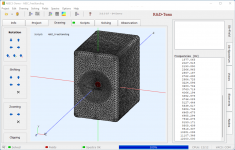 2022-04-08 05_48_03-ABEC3-Demo - ABEC_FreeStanding.png175.4 KB · Views: 147
2022-04-08 05_48_03-ABEC3-Demo - ABEC_FreeStanding.png175.4 KB · Views: 147 -
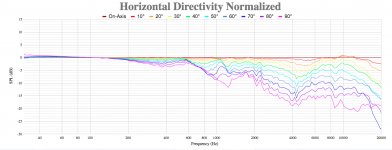 Screen Shot 2020-01-28 at 6.03.03 PM (2).png35.6 KB · Views: 131
Screen Shot 2020-01-28 at 6.03.03 PM (2).png35.6 KB · Views: 131 -
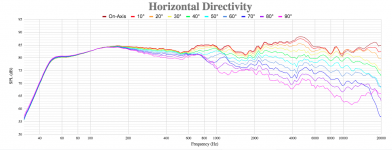 Screen Shot 2020-01-28 at 6.02.49 PM.png38 KB · Views: 138
Screen Shot 2020-01-28 at 6.02.49 PM.png38 KB · Views: 138
- Home
- Loudspeakers
- Multi-Way
- The Preference for Direct Radiators
